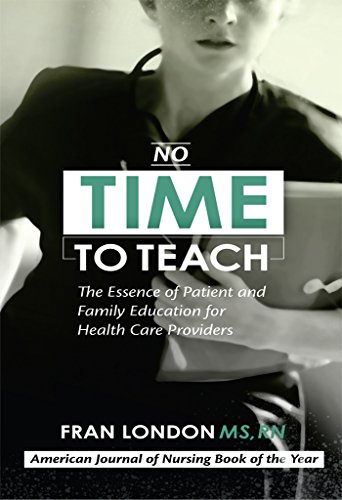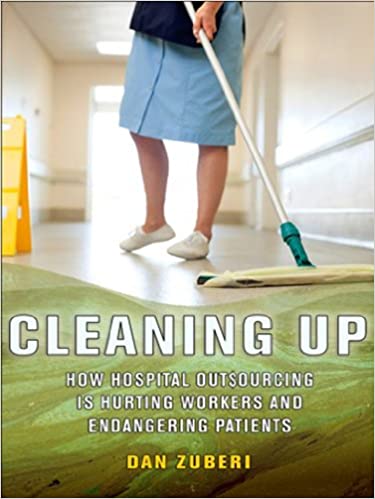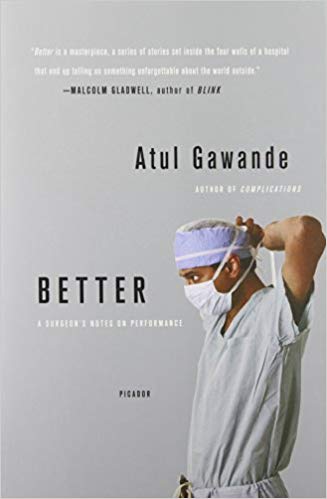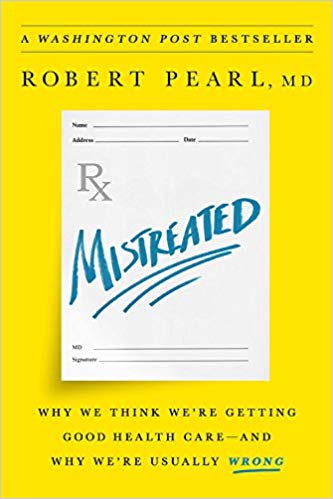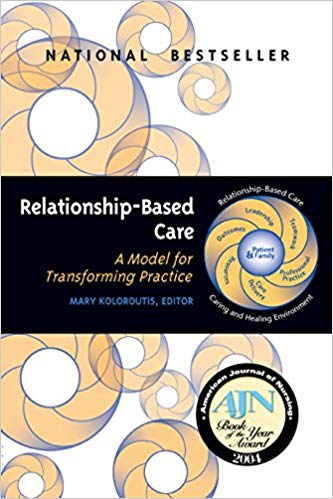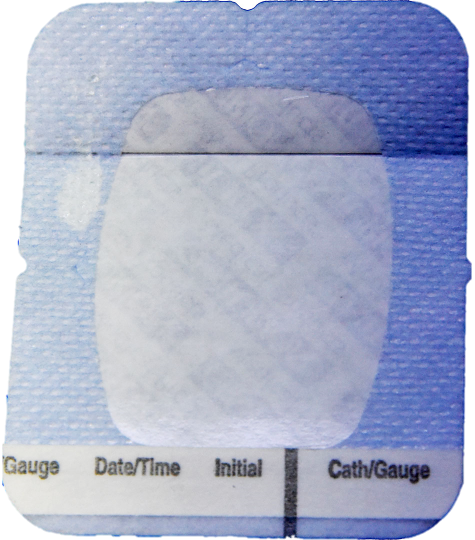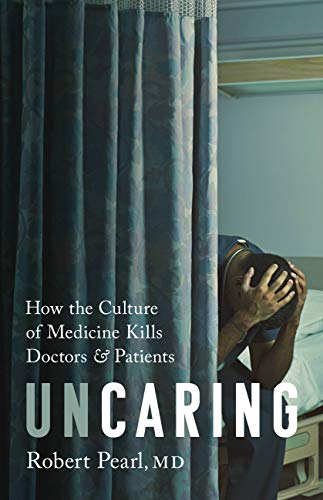
Book Review-Uncaring: How the Culture of Medicine Kills Doctors and Patients
It is not that they set out to be uncaring. Quite the opposite. Doctors, most of them anyway, got into medicine because of their concern for others. That’s what makes the fact that modern medicine, particularly in the United States, isn’t as good as it could or even should be for patients or doctors. In Uncaring: How the Culture of Medicine Kills Doctors and Patients, Robert Pearl pulls back the covers on the systems that drive our modern healthcare industry and what’s wrong with them.
I’ve read and reviewed Pearl’s previous work, Mistreated, and have fallen into the awareness that he and I can correspond from time to time on the problems with healthcare and the associated public health issues. I deeply respect Pearl’s perspective and wisdom about how the systems work – and how they don’t. Uncaring is no exception to this general regard I have for his work – it provides a clarity into what ails the system – even if he cannot offer any specific remedies.
The Long History of Bad Practices
It was Ignas Semmelweis who is credited with the beginnings of our awareness that would ultimately become germ theory. What’s not commonly known is that Semmelweis was dismissed and nearly unemployable. He died alone in a mental institution. So much for the embrace of new and improved techniques to move forward the practice of medicine. Unfortunately, his experience was far from unique.
The process of bloodletting involves removing blood from an infected individual with the thought that the four humors are out of balance. It’s believed that this killed George Washington – yes, that one. Of course, he was already suffering from some ailment, but the degree of blood loss due to the bloodletting could not have helped. And still, bloodletting remained an acceptable medical practice even through 1923, when it became a published practice. This is nearly 100 years after the harmful effects were established.
What’s important here isn’t that there were practices in medicine that were ultimately discovered to be harmful – there’s a long list of them. The point is really the time between when a practice is determined to be bad and the time it takes for that information to permeate the practice. Pearl cites the often-mentioned statistic that the average time for a medical innovation to reach practice today is 17 years – this is, I suppose, better than our history, but a far cry from what we can and should do.
What You See Is All There Is
Daniel Kahneman in Thinking, Fast and Slow describes it as What You See Is All There Is (WYSIATI). Pearl describes it as a cultural insistence that doctors must follow their instincts in their practice rather than the data. From the very beginning, they’ve been taught that they’re special, and it’s their powers of observation that save patients. However, the problem is the data doesn’t support this conclusion.
Atul Gawande proposed bringing checklists to the operating room in The Checklist Manifesto. This was in part to neutralize the power dynamics of the operating room so that staff could speak up, but in another way, it was the application of a proven practice to medicine that has struggled with reliability. Gawande’s book was published in 2009, and to my anecdotal knowledge most operating rooms do not use checklists – and some that do use them do in a rather perfunctory way.
The data can tell you whether something works or not – if people are willing to look at the data. Ivermectin, a veterinary anti-parasitical, was recommended by some as a solution to improving outcomes for those with COVID-19 – except it’s wrong. There’s no data. What people said is that 100% of the people they treated with Ivermectin got better.
The problem with this thinking is that it ignores base-rate. The base rate of mortality – and even hospitalization – with infections from SARS-CoV-2 is relatively low. (I’m not going to quote them here because the rates keep changing with each new variant.) The highest probability for a small clinic that treats as few hundred patients is that all their infections will get better – working treatment or not. Similar arguments were made about former President Trump’s suggestion that hydroxychloroquine sulfate (HCQ) and chloroquine phosphate (CQ) would be effective at improving COVID-19 outcomes. These anti-malarial drugs were proven ineffective – but not before many people tried them – many of whom were written prescriptions by their family physicians. (Ivermectin wasn’t approved for human use, so it wasn’t the physicians enabling this behavior, even if they were encouraging it.)
The problem is that, when there’s a low base rate of mortality, if you try something – and no one dies – you assume it was effective when it wasn’t. Similar problems happen when people start thinking about surgeons.
Practice Makes Perfect
Anders Ericsson and Robert Pool explain in Peak that the best in every world of performance get better by purposeful practice. Whether you simplify this to 10,000 hours, as Malcolm Gladwell does in Outliers, the point is that more purposeful practice is better. With dedicated surgical centers performing the most common surgeries repeatedly, you get better results. That’s easy to see in the data about outcomes. However, that doesn’t fit with the surgeon’s ego that says they get the best results. They systemically discount their bad outcomes, ignoring them or explaining them away. It’s what Thomas Gilovich explains in How We Know What Isn’t So. When you know that more than 50% of surgeons believe they’re better than average, as professors and high school students did, someone has to be wrong.
What does this mean? It means that physicians need practice and experience with a procedure to get good – and to remain good. As a pilot, I must do so many take offs and landings in a given period of time before I can carry passengers. Surgeons don’t have to do any specific number of appendectomies to be able to do one – but I’m not recommending they operate on themselves. Specialization of surgeries to surgical centers allows for better outcomes. Specialization among practice members for different kinds of surgery allows better outcomes for the entire practice.
Hope, At Any Cost
Nearly a decade ago now, I got to play a role in a drama at a pediatric hospital M&M (Morbidity & Mortality) session. It was centered around “everything possible.” It is a phrase that parents of children often use when speaking with the care team about what they should do to protect the lives of their children. It’s also wrong. The point was that there are some things that only extend pain and torment without adding any potential value to a child’s life – but are sometimes done anyway. The point was to teach those in attendance that it wasn’t a literal plea but was rather a starting point for a discussion. In pediatric and non-pediatric situations, people are often willing to give up more than they should for more time, because they can’t bear the loss.
Doctors are encouraged to provide hope when it’s not impossible and to offer ever life-extending options even when those options don’t increase the quality of the additional life but instead spread the misery longer. They’re supposed to be the consummate professionals, being unwavering in their faith in new treatment options and their own skills. However, the unfortunate truth is that, too often, we extend lives and try procedures that we would have been better off not doing. “Everything possible” isn’t the right standard, but it’s the one that is often used.
The Care Guide
It was the late 1990s, and we did something revolutionary for a clinical study. I played a small part in bringing best practice diabetes care to a primary care setting. The program took in data and from it made recommendations about patient care based on the best practice standards at the time. Spearheaded by a visionary endocrinologist and paid for by Roche (then Behringer-Mannheim), the program made a real difference. The key difference, though, was the way that the recommendations were provided to the physician. We gave them broad categories, and they either filled in the details or used the research and recommendations provided to them by the trained nurses – nurses they trusted.
The result was a success because we weren’t telling them exactly what to do, we were nudging them into the right direction and allowing them a bit of choice. (See Nudge for more about this idea.) We built trust with the providers. We made the system work by playing into the culture instead of trying to work against it. However, too often today, doctors feel like the systems are dictating care – and they’re no longer able to be doctors.
Doc-in-a-Box
It’s a rather derogatory way of referring to the nurse practitioners and physicians’ assistants who offer up care in pharmacies and standalone urgent care clinics. It refers to their need to follow the rules and do basic urgent care. Come in with a cough, and leave with a prescription for antibiotics. It’s the extreme form of what physicians fear. The responses are largely scripted. Nurse practitioners and physician’s assistants in most states work in a collaborative practice agreement with a physician who supervises the care they provide – and who is presumably their backup for problems that they can’t handle.
This has dramatically improved healthcare access in many ways – and it’s led to the over-prescription of antibiotics and, by extension, the emergence of multi-drug resistant bacteria. People expect they can have treatment if they go to a doctor – even a doc-in-a-box. As a result, many people leave with prescriptions that will do them no good. Additionally, because they’re only taking prescriptions to feel better, they’ll often stop taking them before the infection is fully under control and will rebound with an infection that is mostly of variants of the infection that are least susceptible to the antibiotic – thus furthering the development of antibiotic-resistant bacteria.
Bias Toward Action
Built into our human psyche is a bias towards action. There’s a bias towards doing “something” – even if that something ultimately turns out to be harmful. Nassim Nicholas Taleb explains this in Antifragile, and it resurfaces everywhere. We’re notoriously bad about waiting for things to play out. As a result, we prescribe medications that do no good. But more than that, surgeons can take an old saying to heart. “A chance to cut is a chance to cure” is a common refrain from surgeons that exposes the belief that surgery is always an option to cure – even when it isn’t. It may help the surgeon feel good that they’ve done “everything possible,” but that doesn’t mean it’s right.
Doctors Disconnected from the System
For most of us, we’ve got a positive view of our personal doctor. We believe they’re competent above their peers, and we’re lucky to have them. We also simultaneously believe that the healthcare system is broken. We accept the gap between these two, even though our doctor is a part of the system. The truth is that we treat our doctors like they’re separate and apart from the system they operate in, but that’s neither real nor reasonable.
Primary or Specialty?
It’s a simple pyramid. There are lots of people at the bottom and few people at the top. Fewer physicians/specialists and fewer patients. If you want to make a big impact, where should you focus your energies? Most people realize that the answer is the bottom of the pyramid. It’s the day-to-day interactions with healthcare that are the opportunities to improve preventative care – but that’s not the way most healthcare systems prioritize investments. Investments are made with specialists because they can charge premium rates and generate premium revenue.
Of course, working on the primary care isn’t fun or sexy. It doesn’t necessarily feel like you’re making that much of a difference. It’s small, incremental improvements, but those improvements are multiplied across many physicians and can make a huge impact. The point isn’t the impact, the point is that it doesn’t “sell well,” either internally or externally. There’s no marketing message to most efficient primary care – because patients don’t care about that. There are messages to be sent about cutting edge procedures – that most people will never need.
Equal Treatment
In medicine, like justice, we expect that everyone gets the same treatment – that there are no biases. However, the data says otherwise. Just like we know that judges aren’t impartial, physicians aren’t either. This is particularly true for physicians in ER settings, where triage is an expected part of the job. In law, numerous sources (including Thinking, Fast and Slow, Complications, When, and Pre-Suasion) speak to the fact that judges are less likely to grant parole right before lunch, and, often, the more you appear like the judge, the more likely you are to be treated more leniently. We like to believe that physicians are different, but the data says differently.
Capitation
One of the central problems with the spiraling healthcare costs is the lack of a focus on prevention. In a fee for service model, you get paid for doing more, and therefore there’s a negative incentive to work on preventative medicine. This was a problem in the 1930s, when the Committee on the Costs of Medical Care (CCMC) met to discuss solutions. They proposed capitation. That is, they’d give physicians or medical systems a fixed fee per patient per year. With large enough populations, the extreme cases are weighed out by people with little or no need in a year. The incentives would then shift strongly to physicians doing preventative care, which is generally less expensive in the long run. They’d make more money when they managed their patient population health well.
The problem is that nobody wanted it. The physicians didn’t want their income tied to the behaviors of patients. As we learned in Change or Die, as much as 80% of healthcare costs have behavioral roots, and changing behaviors isn’t something that physicians were trained for. The resulting compromise was the Social Security Act – a far cry from what was intended but a win for citizens nonetheless.
When you create cultures and set up systems such that people are incentivized for the wrong things, you create bad outcomes. It’s not that you’re getting the law of unintended consequences, as explained in Diffusion of Innovations, rather it’s that you’ve designed the system for bad outcomes. Sometimes, those outcomes are a system that seems Uncaring.

